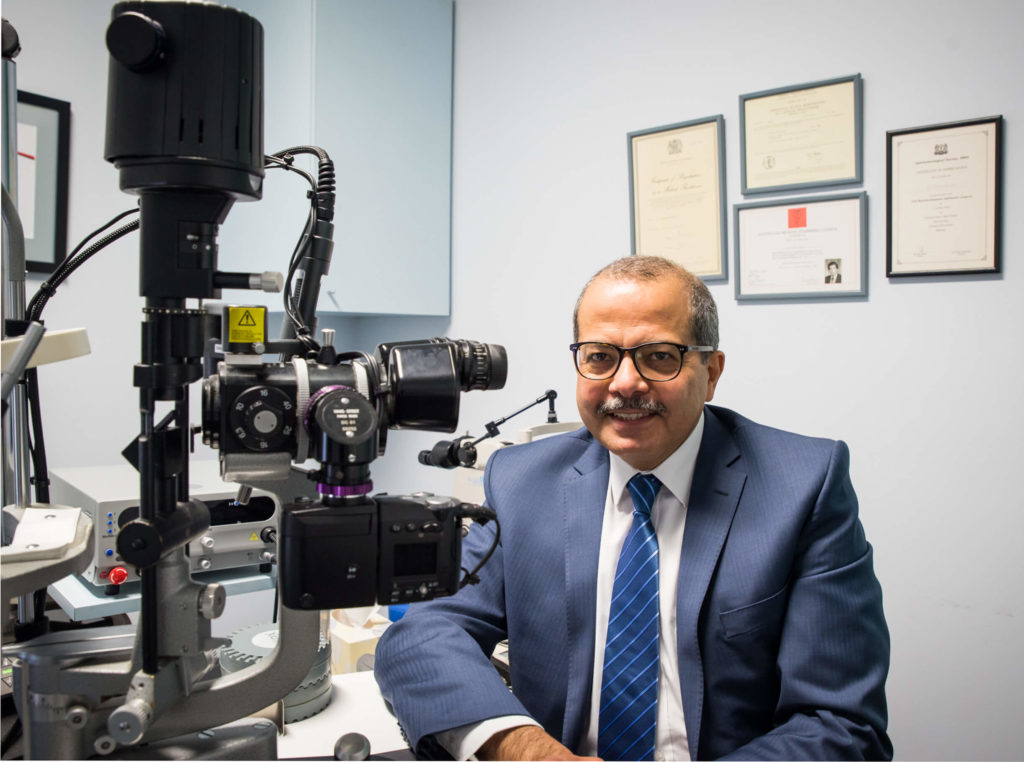Central Serous Chorioretinopathy – Northern Eye Centre – Eye Doctors Melbourne

As a leading eye doctor in Melbourne, Dr Bassili comes across many different eye conditions on a regular basis, and one that is increasing in prevalence is Central Serous Chorioretinopathy (CSC). While the cause of the condition is not fully known, it is thought to be related to the increased usage of systemic steroids (most for skin conditions).
What Is Central Serous Chorioretinopathy?
The retina is the inside lining of the back of the eye and is composed of several layers of light-sensitive nerve cells. Most critically though, the retina must be dry for it to work correctly and as such, one of the deepest layers of the retina is the retinal pigment epithelium (RPE). This layer is designed to continuously pump fluid out of the retina, and for most patients, works perfectly. However, in central serous chorioretinopathy, some disturbances may cause the RPE layer not to work efficiently, causing fluid to accumulate underneath the retina (almost like a blister).
Symptoms and Factors Influencing CSC
Patients suffering from central serous chorioretinopathy are often males aged in their thirties to fifties. Females do not have as high a risk of getting the condition, though people who suffer from higher stress and hyperactive personalities are more likely to develop CSC. As mentioned, steroid medication is a factor, as is the increased consumption of caffeine and energy drinks. Patients with a genetic predisposition as well as those with high blood pressure or heat disease may be more susceptible to CSC. Pregnant women are also at increased risk of the condition.
The symptoms of central serous chorioretinopathy general involve reduced or impacted vision, including circular blurring in the centre of one eye, distortion, dimness or colour changes. However, it is unlikely that patients will experience any pain.
Diagnosis and Treatment
With tests including dilated retina examinations, optical coherence tomography and fund us fluorescein angiography, eye doctors can identify the presence of central serous chorioretinopathy.
In most instances, CSC is expected to resolve itself within a few weeks, with the fluid passing and the blister subsiding. If the condition persists beyond a few months, laser treatment is advised and offers a high success rate. Ultimately, in chronic instances of CSC, patients are provided with a variety of medications aimed at treating the condition and may be advised to undertake further photo dynamic laser therapy. These two methods may give long-term resolution for patients.
Talk to a Leading Eye Doctor in Melbourne
Dr Bassili has helped hundreds of individuals suffering from eye conditions including central serous chorioretinopathy. If you’re suffering from impaired vision or eyesight problems, talk to the leading eye doctor in Melbourne and his team at Northern Eye Centre today!
